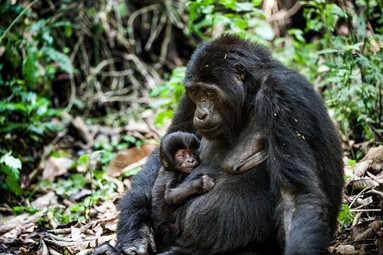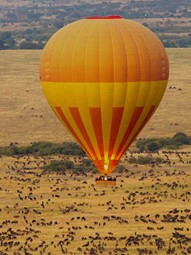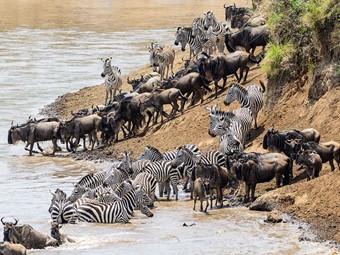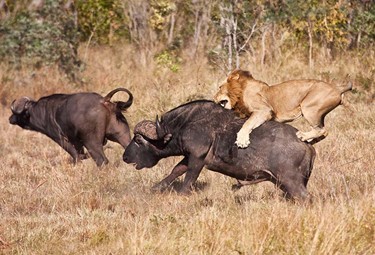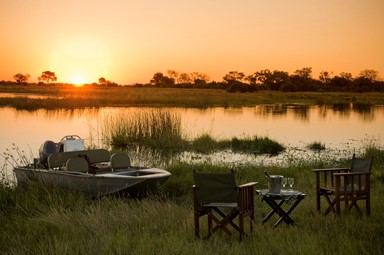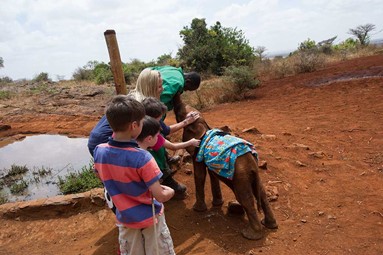What species of wildebeest you can expect to see on safari
The wildebeests, also called gnus (pronounced gunuu) , are the most abundant big game species;
What you will see in east Africa are the blue wildebeest.
Blue wildebeest have both migratory and sedentary populations. In the Ngorongoro most animals are sedentary and males maintain a network of territories throughout the year, even though breeding is seasonal in nature. Females and young form groups of about ten individuals or join together in larger aggregations, and non-territorial males form bachelor groups. In the Serengeti and Tarangire ecosystems, populations are mostly migratory, with herds consisting of both sexes frequently moving, but resident subpopulations also exist.
In the Maasai Mara game reserve, there is a non-migratory population of blue wildebeest which had dwindled from about 119,000 animals in 1977 to about 22,000 in 1997. The reason for the decline is thought to be the increasing competition between cattle and wildebeest for a diminishing area of grazing land as a result of changes in agricultural practices, and possibly fluctuations in rainfall.
Spot these wonderful animals on any safari

